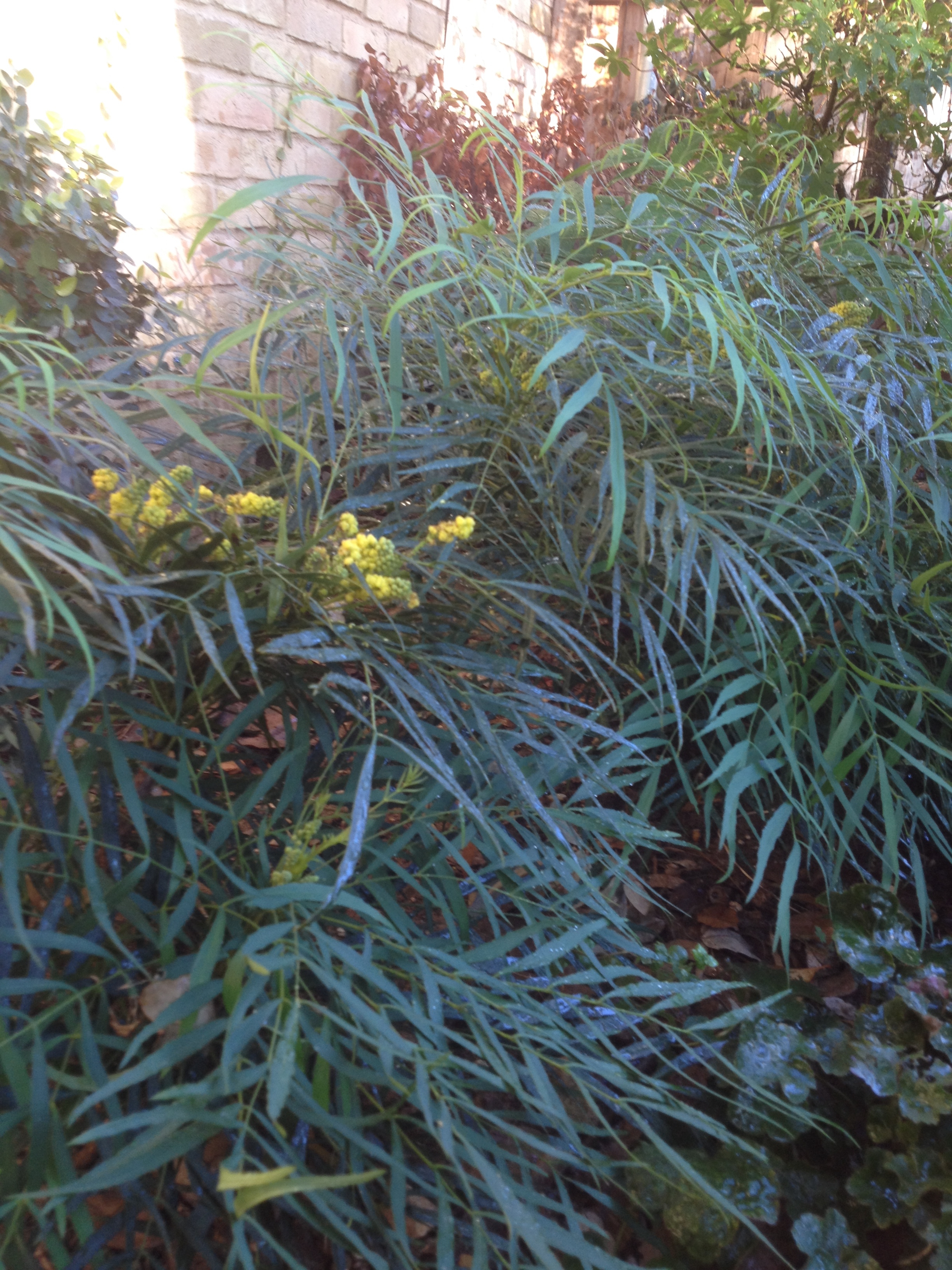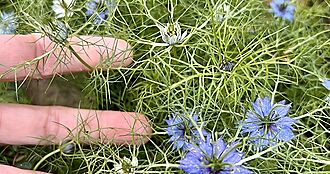Mahonia
Mahonia
Mahonia is a slow-growing, trouble-free shrub that is excellent for bringing interest to shady areas and attracting birds to your garden. When the blue, grape-like fruits are ripe, the birds devour them with gusto.

Mahonia prefers light or partial shade; plants need protection from the hot afternoon sun. The soil should be neutral to slightly acidic, humus rich, moist and well drained. Only light selective pruning is recommended, as plants do not tolerate shearing.
Tips
Mahonia looks great in groups of three or more. Use it in mixed or shrub borders, as a specimen and in woodland gardens. It truly excels as a transition plant between a woodland garden and a more formal garden.
Recommended
M. bealei is an open, upright shrub. Its mildly fragrant, lemon yellow flowers are followed by clusters of light blue berries. The spiny-edged foliage is a dull blue-green and is very leathery.
M. fortunei (Chinese mahonia) is an upright shrub with dark green holly-like foliage and bright yellow flowers. The flowers are followed by round, dark blue berries with a hint of white. This species grows 4' tall and 3' wide.
M. repens (creeping mahonia) a Texas native low-growing suckering shrub bearing sharply toothed foliage and dark yellow flowers, which are followed by blue-black berries. Grows to only 1-foot tall. A taller cultivar is available.
M. eurybracteata 'Soft Caress' offers slender bamboo-like foliage with bright yellow blooms and a compact habit; 4’ tall.
Features: open, upright shrub; fragrant, yellow late-winter to spring flowers; late-spring to early-summer fruit; leathery foliage
Height: 1–12'
Spread: 3–10'
Hardiness: zones 6–9
Notes: The juicy berries are edible but somewhat tart. They can be eaten fresh or used to make jellies, juices or wine—if you get to them before the birds do.


